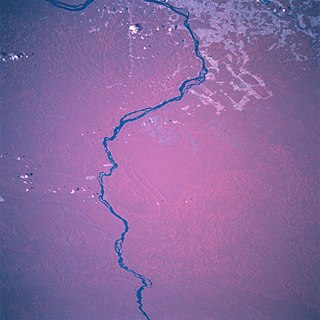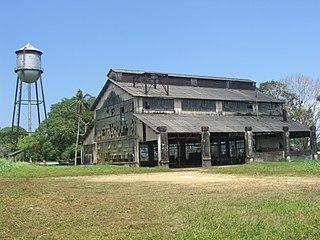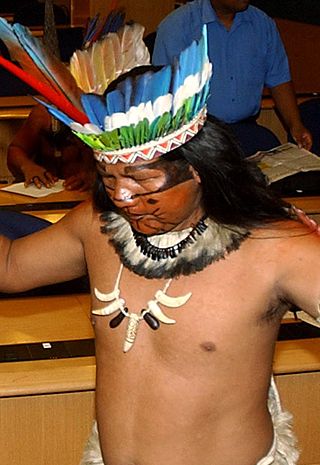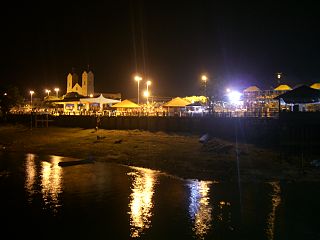This article needs additional citations for verification .(December 2008) |
The Community Empowerment Network (CEN) is a US-based non-profit organization that focuses information technology education in rural communities and developing countries.
This article needs additional citations for verification .(December 2008) |
The Community Empowerment Network (CEN) is a US-based non-profit organization that focuses information technology education in rural communities and developing countries.
CEN was founded by Robert Bortner in November 2004. Between 2002 and June 2004, Robert was managing the USAID-funded Rio Tapajós (Brazil) Telecenter Installation Project, which installed solar powered community operated telecenters in the communities of Suruacá and Maguari. After completion of this project, Bob continued to work with these communities and with the community of Xixuau, located approximately 500 km north of Manaus along the Rio Jauaperi, and he mentored key activists in the communities. Encouraged by their significant progress in addressing community challenges and becoming more independent, Bob launched CEN and continued this work as the Amazon Pilot Project. In April 2008 CEN began the implementation of the Creating a Culture of Learning and Empowerment in the Amazon (cCLEAR) Project. Angela Viehmayer, Director at Brazilian NGO ( Link Social) and serving on the CEN board, is the Field Manager for the project to add a sustained presence to the communities.
CEN is[ when? ] working on a pilot project consisting of three communities in the Brazilian Amazon. In two communities located along the upper Tapajós River, it helped manage the installation of solar-powered, internet-connected telecenters, which was completed by mid-2004.
This project was selected as a finalist in the 2006 Stockholm Challenge

The Amazon River in South America is the largest river by discharge volume of water in the world, and the disputed longest river system in the world in comparison to the Nile.

The Xingu River is a 1,640 km (1,019 mi) river in north Brazil. It is a southeast tributary of the Amazon River and one of the largest clearwater rivers in the Amazon basin, accounting for about 5% of its water.

Fordlândia is a district and adjacent area of 14,268 square kilometres (5,509 sq mi) in the city of Aveiro, in the Brazilian state of Pará. It is located on the east banks of the Tapajós river roughly 300 kilometres (190 mi) south of the city of Santarém.

The Tapajós is a river in Brazil. It runs through the Amazon Rainforest and is a major tributary of the Amazon River. When combined with the Juruena River, the Tapajós is approximately 2,080 km (1,290 mi) long. It is one of the largest clearwater rivers, accounting for about 6% of the water in the Amazon basin.

Santarém is a city and municipality in the western part of the state of Pará in Brazil. Located at the confluence of the Tapajós and Amazon Rivers, it has become a popular tourist destination. It is the second-most important city in the state, and the financial and economic center of the western part of the state. It leads the Santarém Metropolitan Area, made up of Santarém, Belterra and Mojuí dos Campos. It was once home to the Tapajós Indians, a tribe of Native Americans after whom the river was named. They were the leaders of a large, agricultural chiefdom that flourished before the arrival of Europeans.
The Nheengatu language, often written Nhengatu, is an indigenous language of the Tupi-Guarani family, the direct modern descendant of Tupinambá, or Tupi, which extended throughout the Amazon rainforest from Maranhão.

A telecentre is a public place where people can access computers, the Internet, and other digital technologies that enable them to gather information, create, learn, and communicate with others while they develop essential digital skills. Telecentres exist in almost every country, although they sometimes go by a different names including public internet access center (PIAP), village knowledge center, infocenter, Telecottage, Electronic Village Hall, community technology center (CTC), community multimedia center (CMC), multipurpose community telecentre (MCT), Common/Citizen Service Centre (CSC) and school-based telecentre. While each telecentre is different, their common focus is on the use of digital technologies to support community, economic, educational, and social development—reducing isolation, bridging the digital divide, promoting health issues, creating economic opportunities, and reaching out to youth for example.

The Solar Electric Light Fund (SELF) is a non-profit organization, established in 1990 and based in Washington, D.C. Their mission is to design and implement solar energy solutions to assist those in poor communities where energy, education, health care, and agricultural development are at risk. Since its establishment, SELF has completed several projects in more than 20 countries including a solar powered drip irrigation in Benin, a health care centre in Haiti, telemedicine in the Amazon rainforest, online learning platform in South Africa, and a microenterprise development in Nigeria.

The Munduruku, also known as Mundurucu or Wuy Jugu or BMJ, are an indigenous people of Brazil living in the Amazon River basin. Some Munduruku communities are part of the Coatá-Laranjal Indigenous Land. They had an estimated population in 2014 of 13,755.

Engineers for a Sustainable World (ESW) is a not-for-profit network headquartered in Pittsburgh, PA, USA. ESW is an umbrella organization with chapters established at over 50 colleges, universities, and city chapters located primarily in the United States and Canada ESW members work on technical design projects that have a focus on sustainability and environmental issues. Projects can be located either on-campus, in the local community, or internationally. Chapters are made up of students or professionals and are semi-autonomous.

Sinop is a city in the Brazilian state of Mato Grosso. The fourth-largest city in the state, its population in 2020 is estimated at more than 146,005 inhabitants, placing Sinop in 229th place in Brazil. It has an area of 3194.339 km ². A Sivam radar has been installed for monitoring the Amazon Basin. Also Embrapa has a branch in Sinop, the only one in the state of Mato Grosso. It is known as the Capital of Nortão, a major city of northern Mato Grosso.

Itaituba is a city and municipality located in the state of Pará, Brazil, and one of the most important socioeconomic centers in the western region of the State.
Fusion is the ICT for Development (ICT4D) movement of Sarvodaya, Sri Lanka, the leading NGO, serving over 15,000 villages. The name Sarvodaya is taken from the Sanskrit meaning of 'awakening (udaya) of all (sarva)', and roots back to the Gandhian ideals. Fusion, as implied by the true meaning of the word, envisages the fusion of the vision and mission of Sarvodaya into the broader development scenario, using Information and Communication technologies (ICT) as a common fabric. Thus, Fusion is identified as the ICT for Development (ICT4D) movement of Sarvodaya.
The Teles Pires is a 1,370 km (850 mi) long river in Brazil. The river flows through the state of Mato Grosso and its lower part marks the border between the states of Mato Grosso and Pará. At its mouth it joins Juruena River and together they form the Tapajós, which is one of the biggest tributaries of the Amazon River. The most important settlement along the river is Alta Floresta. One writer says that it was originally called the Paranatinga, and was renamed after Captain Telles Pires who died exploring the river in 1889.

Community forestry is an evolving branch of forestry whereby the local community plays a significant role in forest management and land use decision making by themselves in the facilitating support of government as well as change agents. It involves the participation and collaboration of various stakeholders including community, government and non-governmental organisations (NGOs). The level of involvement of each of these groups is dependent on the specific community forest project, the management system in use and the region. It gained prominence in the mid-1970s and examples of community forestry can now be seen in many countries including Nepal, Indonesia, Korea, Brazil, India and North America.

The Jamanxim River is a river of Pará state in north-central Brazil. Originating in the Serra do Cachimbo, it is a tributary of the Tapajós, into which it flows a few kilometers upstream from Itaituba.

A community solar project, farm or garden is a solar power installation that accepts capital from and provides output credit and tax benefits to multiple customers, including individuals, businesses, nonprofits, and other investors. Participants typically invest in or subscribe to a certain kW capacity or kWh generation of remote electrical production. The project's power output is credited to investors or subscribers in proportion to their investment, with adjustments to reflect ongoing changes in capacity, technology, costs and electricity rates. Community solar provides direct access to the renewable energy to customers who cannot install it themselves. Companies, cooperatives, governments or non-profits operate the systems.

Liter of Light is an open source design for a low-cost light tube that refracts solar light to provide daytime interior lighting for dwellings with thin roofs. Daylighting is cheaper than using indoor electric lights during the day. The device is simple: a transparent two-liter bottle is filled with water plus a little bleach to inhibit algal growth and fitted into a hole in a roof. The device functions like a deck prism: during daytime the water inside the bottle refracts sunlight, delivering about as much light as a 40–60 watt incandescent bulb to the interior. A properly installed solar bottle can last up to 5 years.
The São Luiz do Tapajós Dam was expected to be the second largest hydroelectric dam in Brazil, after Belo Monte. It would have an installed capacity of 8,040 MW and its reservoir would cover about 400 km2 in the Tapajós river basin.

The Tapajós hydroelectric complex is a proposed complex of hydroelectric dams on the Tapajós and Jamanxim rivers in the state of Pará, Brazil. The Tapajós dams would contain locks, thus converting the river into a navigable waterway. A "platform" model is proposed under which all people and material would be moved by river or by helicopter, avoiding the need to build access roads and the consequent inflow of settlers and environmental damage. However, there have been protests against flooding of indigenous territory by the dams, and the largest dam seems unlikely to be approved.